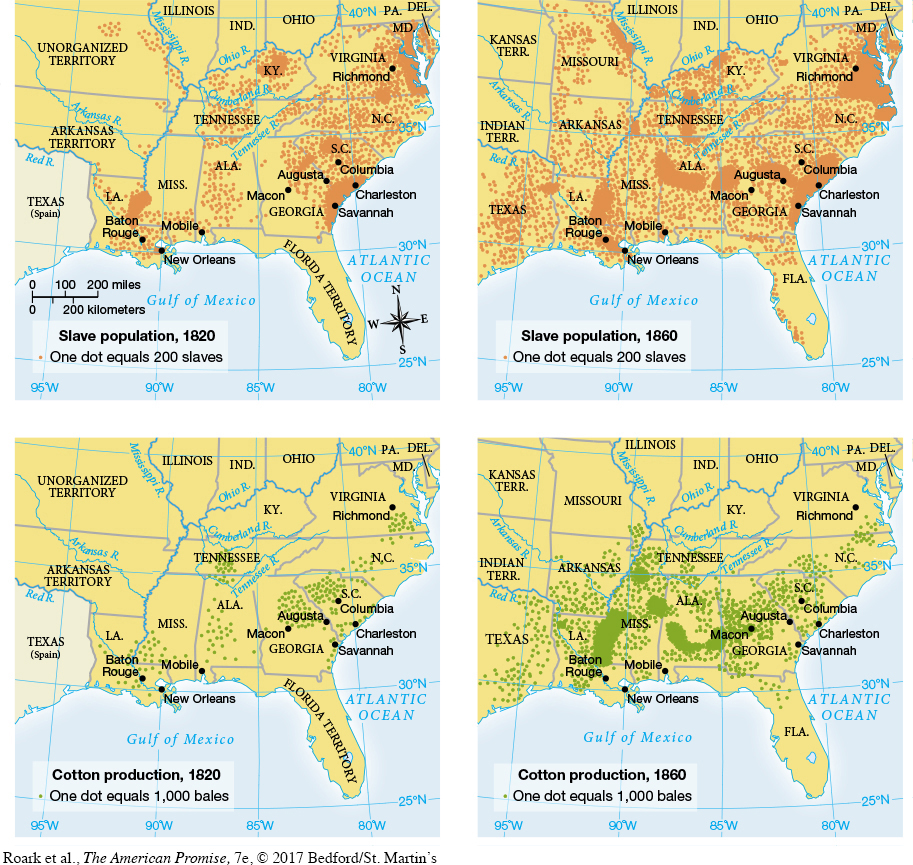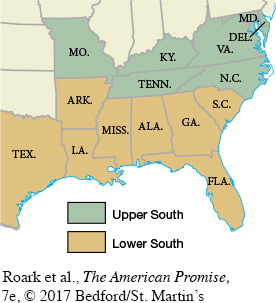The American Promise: Printed Page 349
The American Promise, Value Edition: Printed Page 321
The American Promise: A Concise History: Printed Page 365
Cotton Kingdom, Slave Empire
In the first half of the nineteenth century, millions of Americans migrated west. In the South, the stampede began after the Creek War of 1813–
But more than anything it was cotton that propelled Southerners westward. South of the Mason-

The American Promise: Printed Page 349
The American Promise, Value Edition: Printed Page 321
The American Promise: A Concise History: Printed Page 365
Page 350
The cotton kingdom was also a slave empire. The South’s cotton boom rested on the backs of slaves. As cotton agriculture expanded westward, whites shipped more than a million enslaved men, women, and children from the Atlantic coast across the continent in what has been called the “Second Middle Passage,” a massive deportation that dwarfed the transatlantic slave trade to North America. Victims of this brutal domestic slave trade marched hundreds of miles southwest to the Lower South, where they literally cut new plantations from the forests. Cotton, slaves, and plantations moved west together.
The American Promise: Printed Page 349
The American Promise, Value Edition: Printed Page 321
The American Promise: A Concise History: Printed Page 365
Page 351The slave population grew enormously. Southern slaves numbered fewer than 700,000 in 1790, about 2 million in 1830, and almost 4 million by 1860. By 1860, the South contained more slaves than all the other slave societies in the New World combined. The extraordinary growth was not the result of the importation of slaves, which the federal government outlawed in 1808. Instead, the slave population grew through natural reproduction; by midcentury, most U.S. slaves were native-